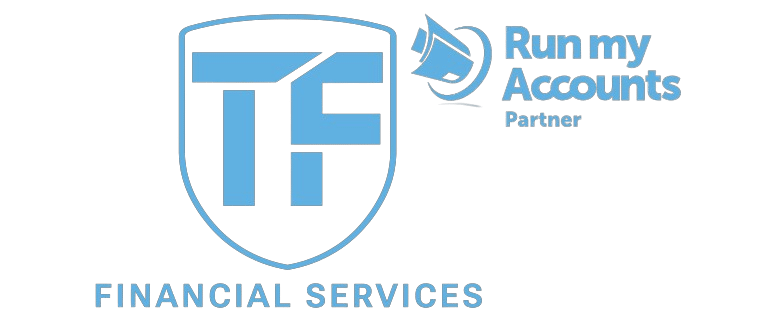Swiss SME Standard Chart of Accounts Guide for Businesses
Understanding the Swiss Standard Chart of Accounts (SCA)
If you’re running a small or medium-sized business (SME) in Switzerland, you’ve probably heard about the Swiss Standard Chart of Accounts—or “Suisse SME Standardkontenrahmen” in German. But what is it, and why should you care?
Let’s break it down together.
In simple terms, the Standard Chart of Accounts (SCA) is a structured framework that helps businesses categorize their financial transactions. Think of it as the organizational blueprint for your company’s financial health. It helps you track what you earn, what you spend, and where your money is going.
Why Is the SCA Important for Swiss SMEs?
You might be wondering: “Can’t I just keep a spreadsheet with my income and expenses?”
Sure—you could do that. But as your business grows, things get more complicated. That’s where the Swiss SCA comes in super handy. It’s a trusted tool developed specifically for SMEs in Switzerland, making it easier to:
- Prepare accurate financial reports
- Stay compliant with Swiss accounting laws (like the Swiss Code of Obligations)
- Standardize financial statements for banks or investors
- Track your business performance more efficiently
The Basics of the Swiss SME Chart of Accounts
Now, let’s dive a little deeper—without diving into accounting jargon, we promise.
The SCA is organized using account numbers, usually beginning with digits from 1 to 9. Each digit represents a specific area of your business finances. Here’s a simplified breakdown:
- 1 – Assets: Everything your business owns (bank accounts, equipment, inventory, etc.)
- 2 – Liabilities and Equity: What your business owes (loans, debts) and your own investment
- 3 – Operating Income: Money coming in from your core business activities
- 4 – Operating Expenses: Running costs like rent, salaries, and utilities
- 5–6 – Additional Expenses: Administrative costs, marketing, etc.
- 7 – Non-operating items: Things like gains from selling old equipment or foreign exchange differences
- 8 – Internal Charges: Used internally for tracking purposes in bookkeeping (optional for SMEs)
- 9 – Year-end Adjustments: Reserves, taxes, depreciation, and other closing entries
Just imagine this breakdown as buckets for your money. You dump every franc into the right bucket—and suddenly, your finances don’t feel so chaotic.
Who Uses the Standard Chart of Accounts?
Typically, small and medium-sized businesses across various industries in Switzerland use the SCA. This includes:
- Retail shops
- Manufacturers
- Service providers like IT consultants, architects, and freelancers
- Startups aiming for structured accounting from day one
Even if you’re just starting out, it’s smart to adopt the SCA early. It keeps things tidy from the beginning and saves a ton of time (and headaches) during tax season.
Does the SCA Apply to My Business?
Great question! If your Swiss business meets the criteria for being an SME under Swiss law, there’s a good chance the Swiss SCA is highly recommended for you.
However, it’s not strictly mandatory for all businesses. Some sectors or larger companies follow different frameworks (e.g., IFRS or Swiss GAAP FER). But choosing this standard helps streamline processes, especially when you’re small or medium and just trying to keep on track.
Main Benefits of Using the Swiss SCA
Okay, let’s be real—bookkeeping isn’t exactly exciting for most people. But getting it right? That can save you from big troubles down the road.
Here are some reasons why embracing the Swiss SCA is a smart move:
- It makes your accountant’s life easier (which we all know translates into lower bills).
- You get clear, consistent financial reports—useful when you’re applying for funding or loans.
- It helps you make better business decisions based on up-to-date, tidy data.
- You save time during audits and tax filing because everything is already structured.
How to Get Started with the SCA
Feeling ready to switch to or adopt the standard chart of accounts? It’s easier than you think. Here’s how to get started:
1. Get a Template or Software
Many accounting software tools in Switzerland already include SCA-compatible templates. Popular tools like Bexio, Banana, or Abacus make it easy to plug your numbers into the right spots.
2. Customize for Your Business
Not every business is the same. You can tweak the chart—within reason—to reflect your unique needs. For example, if you’re a digital marketing agency, you might want separate categories for software subscriptions or ad spend.
3. Talk to an Expert
If this sounds overwhelming, don’t worry. A quick coffee meeting with your accountant or a local financial advisor can give you a head start. They’ve seen businesses just like yours and can recommend an SCA setup that works best.
Real-Life Example: Anna’s Artisan Bakery
Let’s imagine a real-world scenario.
Anna runs a small bakery in Zürich—just her and two employees. At first, she managed her numbers with Excel but struggled to see how much profit she was really making. Once her accountant introduced her to the Swiss SME Standard Chart of Accounts using Bexio, it was like a lightbulb went off.
Now she knows:
- Exactly how much she spends on ingredients vs. packaging
- How profitable her weekend pop-up stalls are
- Whether hiring another employee is financially feasible
She’s not an accountant—but thanks to the SCA, she doesn’t need to be.
Final Thoughts: Why the Swiss SCA Is a Game-Changer
At first glance, accounting systems can look intimidating. But once you peel back the layers, the Swiss SME Standard Chart of Accounts is more of a helpful assistant than a burden.
It keeps your financial data neat, easy to understand, and ready for action. Whether you’re applying for a business loan, tracking your growth, or just trying to get a handle on your monthly expenses, this tool is a must-have for Swiss SMEs.
So, what’s stopping you?
Take the first small step today. Start by reviewing your current bookkeeping setup. You might find that switching to the standard chart of accounts is just what you need to bring clarity—and calm—to your financial world.
Useful Keywords:
Swiss SME chart of accounts, standard chart of accounts Switzerland, Swiss accounting standards, SME bookkeeping Switzerland, small business accounting Switzerland
Ready to streamline your finances the Swiss way? Let us know your questions or share how you’ve used the SCA in your own business—we’d love to hear your stories!

